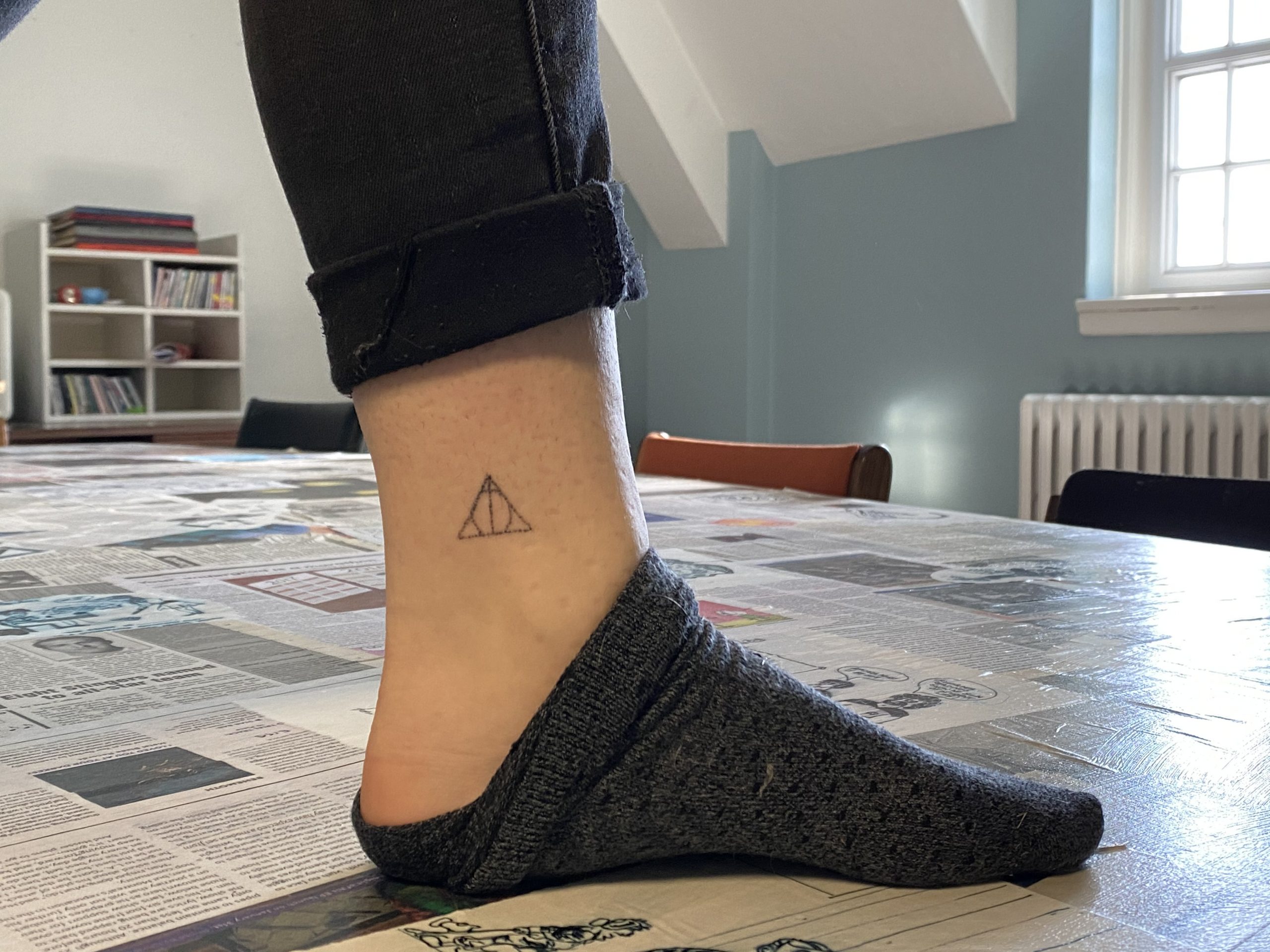When I was a kid, my mom and I took turns reading bedtime stories together. Most have burned themselves into my memory: Max and Ruby: Bunny Cakes, Robert Munsch’s Purple, Green and Yellow, Ghost and Pete… The list goes on.
I still dream of the pink, sparkly cake Ruby made in the book; I think of Purple, Green and Yellow every time I use markers of those colours, and find Ghost and Pete’s rhymes stuck in my head obnoxiously often for someone who hasn’t read the book in more than a decade and a half. How many toes does a skeleton have? Ten! Sing it again!
But one book stands out among the rest. One shapes the person I am today, impacts where I choose to travel to, and found me repeatedly jabbing a needle dipped in ink into my left ankle two weekends ago––a line inside of a circle inside of a triangle.
(soft whimsical music playing)
Harry Potter. If you know me, you absolutely knew that was coming. Read on or don’t, I don’t care.
Unfortunately, I often seem to find myself surrounded by people who either are indifferent towards or actively hate Harry Potter. Please hold while I call their mothers to ask if they dropped them on their heads as infants. What kid doesn’t dream of an alternate universe in which the fantastic creatures of our imaginations actually… exist? Also, I don’t think I’ve ever actively hated anything as strongly as these people seem to hate Harry Potter, except maybe beets. What’s up with all the rage, muggles?
I don’t know about you, but I spent most of my childhood playing in an imaginary land my cousins and I created out of thin air. Don’t call a psychologist just yet, pals, because I had a pet dragon and you didn’t. No, I couldn’t see it. But to me, that didn’t mean it wasn’t there (shoutout to Albus Dumbledore). Sydney Buckbeak Bashyball the Third was very much alive to me––he was red, had yellow spikes down his spine, and could spit fire.
I distinctly remember spending hours reading the Harry Potter books from cover to cover as they were released. I went to the events Indigo would host on release dates, during which they kept the stores open until midnight. These books and films shaped my childhood, and, much like “Friends” and “Gilmore Girls,” they feel like home. Heck, I have a Marauder’s Map on my living room wall. Oh, and a poorly-drawn Deathly Hallows symbol on my ankle for the rest of my life.
So, be indifferent towards Harry Potter, if you will, but to actively hate it seems a little unnecessary, and it feels like dismissing magic as a whole. I can’t wrap my head around why anyone would want to do that.
And if you’re one of those people who has never read the books, meaning you’re basing your opinion entirely on the movies––do yourself a favour and read them. I am not ashamed to say that I have yet to find any book as enthralling as this series.
Mischief managed.
Photo by Matthew Coyte.
